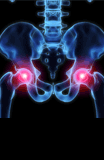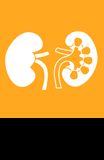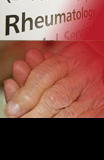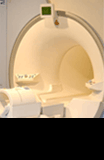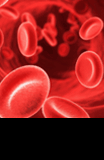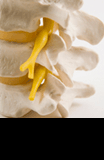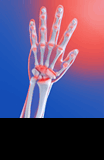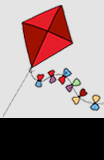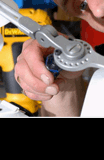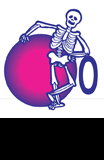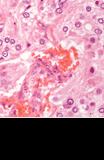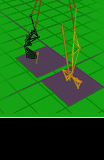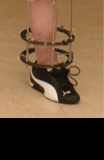What is a gastrostomy tube, PEG/RIG?
A gastrostomy is a small feeding tube connecting your stomach cavity directly to the overlying skin. It enables you to receive food, fluids and medicine directly into your stomach when it is difficult or unsafe to use the normal route via the mouth. It can be put in via two methods: PEG or RIG.
PEG stands for Percutaneous Endoscopic Gastrostomy - inserted via a telescope down the food pipe.
RIG stands for Radiologically Inserted Gastrostomy - inserted using X-ray guidance after having barium placed inside the stomach.
Why would I need one?
If, due to weakness of the muscles of the mouth and throat, you have difficulty swallowing food and/or drink/medicines, or if you are likely to have swallowing difficulties in the future, then this makes it difficult to eat and drink enough to meet your nutritional needs. Weight loss as a result can make an MND patient weaker and more vulnerable to infections. There may also be a risk of food and drink 'going down the wrong way' into the lungs, which can cause chest infections. A PEG/RIG will not slow the course of the disease in someone with MND, but it is believed to significantly improve their quality of life.
Do I have to use the PEG/RIG straight away or can I still eat and drink normally too?
You may not need to use a PEG/RIG for a while after it has been inserted, or PEG liquid feed can be used to supplement what you are eating and drinking via the normal route. This may mean eating and drinking small amounts which you enjoy, rather than eating and drinking because you have to. Using a PEG feed can take the pressure off eating and drinking if chewing and swallowing has become difficult. You can also take most medications via a PEG/RIG.
So, a PEG or a RIG for me? Which is better?
A PEG is the standard and most reliable way to do this procedure but it is not possible in all patients, in which case a RIG is a very safe alternative. A PEG is inserted using a telescope down the food pipe. As a result sedation is required, and patients need to be able to lie comfortably flat for 30 minutes. This is not a general anaesthetic, but it makes people drowsy and they are not able to remember the procedure.
In MND patients with significant respiratory weakness lying flat might be very difficult, and such patients might also be very sensitive to even small doses of sedatives. We assess this by measuring the FVC sitting and lying down. If a PEG is felt unsafe to do, then we suggest a RIG instead, which can be performed without sedation and sat up.
What does the procedure involve?
To have a PEG, an endoscope (camera) is inserted via your mouth into your stomach, to view the stomach lining. When the insertion site for the PEG is located, a small incision is made under local anaesthetic in the skin. The PEG tube is passed into your mouth, down through your stomach and out through the incision. It will then be secured in place and its position checked with the endoscope.
To have a RIG, X-rays are used to locate the insertion site. The patient will have drunk some barium (a harmless white liquid that shows up on X-rays) a day or two before. Sometimes this is put into the stomach via a temporary naso-gastric tube (a tube passed through your nose into your stomach). During the procedure air might also be pushed into your stomach via a naso-gastric tube to inflate it and help place the tube accurately. An incision is made under local anaesthetic in the skin, and the tube is passed through with the use of a thin, hollow needle. It will be secured in place and its position checked using X-ray.
Both procedures are very safe in experienced hands. Major complications are extremely unlikely, but as with any medical treatment, there are always some risks e.g. infection or bleeding. These would be discussed with you in detail before you decide whether to go ahead.
Is it difficult to use and look after a PEG/RIG?
A PEG/RIG tube is only pencil-sized and flexible, so it is not intrusive or visible beneath clothing. People sometimes worry that it might smell, but this is not the case at all – remember that the mouth is connected to the stomach through a similar, just longer tube and is open to the outside world.
Although it might seem a bit daunting to start with, people usually adapt well to carrying out basic care, which involves daily flushing of the PEG/RIG with water. It may be that the person with the PEG/RIG can take care of this, depending on hand dexterity, or that his/her carer needs to be involved.
Your Dietitian will discuss with you the different options regarding the amount, type and method of feed to decide on an option that would suit you. Training is provided by Specialist Nurses after having the PEG/RIG inserted in hospital and there are health professionals you can contact for advice or if you have concerns once you go home.
When is the best time to have a PEG/RIG inserted?
In our experience, some patients put off having a PEG/RIG as a long as possible.
Common reasons given are:
- they see it as 'giving in' to the disease
- they see it as physically and permanently altering their natural body
- they enjoy the wider experience (e.g. taste and social interaction) of eating and want to maximise this as long as possible.
These are all natural and understandable concerns. The pattern of MND varies greatly between individuals, but the best time to have a PEG inserted is usually:
- when it becomes difficult or when it is likely that it will become difficult, to swallow safely and eat and drink sufficient amounts to maintain weight and health
- when respiratory muscles are still working reasonably well.
As the operation for a PEG requires a person to be under sedation and lying down, it is safer and more comfortable if the procedure takes place when FVC (lung capacity) is 50 percent or above. Forced vital capacity is monitored by health professionals, including when you attend clinic.
Some people may be able to manage to eat and drink enough, but their respiratory muscles are weaker therefore we would advise them to have a PEG sooner rather than later. They might not use it immediately - it can be flushed to keep it clean for when it is required. If forced vital capacity is less than 50 percent, a RIG may be an option.
Other life events/activities, e.g. the insertion of a PEG may be arranged to take place following a holiday or a busy period at work.
We aim to mention the idea of a PEG/RIG early on to give you plenty of time to think about it, talk through the risks and benefits and decide if it is the right option for you.
If you decide you would like to go ahead, we would offer you an appointment at the MND Nutrition Clinic which takes place on a Tuesday morning. At the clinic, you would see a Dietitian, Enteral Nutrition Clinical Nurse Specialist and Clinic Coordinator to ensure you have all the information you need and to provide you with an opportunity to ask questions. The date can then be arranged for the PEG/RIG to be inserted at the John Radcliffe Hospital, within the next few weeks.
Patient views
From feedback we have had from people with MND who have attended this clinic and chosen to have a PEG/RIG, they have said it was the right decision for them. They wanted to advise others of the great potential the procedure has to improve their quality of life. For some, having a PEG/RIG but not needing to use it immediately gave 'peace of mind' for when swallowing might become more difficult. For other people, using the PEG/RIG straightaway was felt to be necessary to help maintain their weight, avoid distressing coughing or choking when eating and drinking and to feel as well as possible.
Further information
If you want to discuss this further, please contact Rachael Marsden or Melanie Lord.
Also, see our travel advice section, which has advice regarding travelling with a PEG/RIG.





